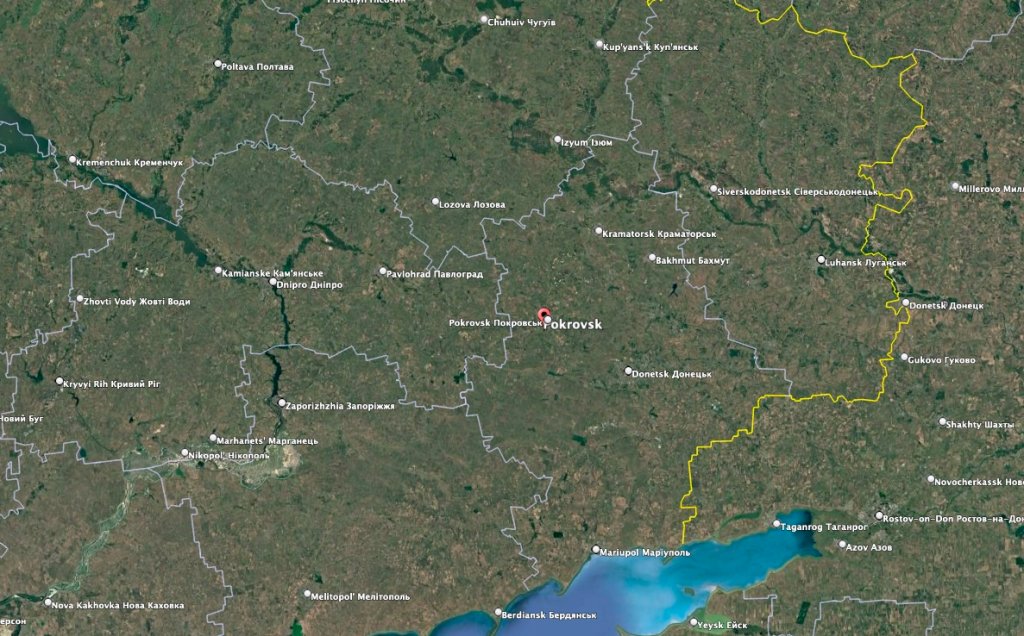New Russian Offensive In Ukraine Looms
Russia is increasing the pace of attacks in eastern Ukraine ahead of what Ukrainian officials and analysts believe will be a major new offensive designed to give it a better bargaining position in ongoing ceasefire talks. Despite that, Russia has reportedly seen a decrease in the amount of territory it has captured while Ukraine has made incremental gains.
“The intensity (of Russian attacks) in the Pokrovsk direction began to increase significantly in the second half of March and reached the level of the end of 2024, when the defense south of the city sometimes simply collapsed,” the Ukrainian DeepState open-source mapping group stated on Telegram Tuesday. About a third of more than 200 clashes across the front lines Tuesday took place in and around Pokrovsk, the Ukrainian military stated. The city is a key logistics hub for Ukrainian forces in the region.

The uptick comes as Ukrainian President Volodymyr Zelensky said Russia is planning a new push along a wide swath of the 620-mile front lines.
“According to our intelligence, Russia is preparing for new offensives in Sumy, Kharkiv, and Zaporizhzhia regions,” Zelensky said last week. “They are dragging out negotiations and trying to drag the U.S. into endless, meaningless discussions about fake conditions to buy time and then try to seize even more land.”
Russian President Vladimir “Putin wants to negotiate territory from a stronger position,” Zelensky added. “He only thinks about war. So, our job — all of us — is defense in the broadest sense of the word.”
“They are preparing offensive actions on the front that should last from six to nine months, almost all of 2025,” Ukrainian military analyst Oleksii Hetman, who has connections to the military’s general staff, told The Associated Press.
Any new Russian push would likely be aided by the transfer of tens of thousands of troops from Kursk, where Ukraine has only a limited presence in what used to be a 500-square-mile salient. Meanwhile, Ukraine is also moving troops out of that area, according to the official Russian RIA Novosti news outlet.
“The Ukrainian Armed Forces have redeployed four brigades from the Kursk direction to try to hold Pokrovsk and recapture Selidovo and Kurakhovo,” the outlet claimed, citing security forces.
Adding to Ukraine’s concerns, Putin has called up 160,000 men aged 18-30. That is Russia’s highest number of conscripts since 2011, the BBC noted.
“The spring call-up for a year’s military service came several months after Putin said Russia should increase the overall size of its military to almost 2.39 million and its number of active servicemen to 1.5 million,” the outlet explained. “That is a rise of 180,000 over the coming three years.”
Though Vice Adm. Vladimir Tsimlyansky said the new conscripts would not be sent to fight in Ukraine, previous waves of those troops have been deployed on what Russia calls a “Special Military Operation.”
Despite increasing its tempo of attacks, Russia has gained the least amount of ground since last July, when Putin’s troops launched their major offensive in the Donbas region, according to DeepState.
“Russian troops managed to occupy 133 square kilometers of Ukrainian territory in March,” stated DeepState, a Ukrainian analytical project that provides updates daily on the current state of the front lines using open-source data. “Compared to November, monthly losses of territory have fallen by almost six times.”
The slowdown in Russian advances is not the result of a pause ahead of ceasefire negotiations, DeepState posited.
“This does not mean that the enemy has sat on its ass and is waiting for a ‘negotiator,’” DeepState suggested. “The [Russians] have resumed offensive operations in several directions.”
